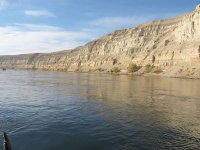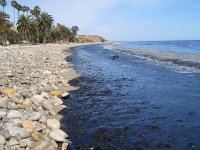New Publication on Potential Population-Level Impacts of Oil Spills on Pacific Herring
March 14, 2024
A new publication, “Potential Population-Level Impacts of Future Oil Spills on Pacific Herring Stocks in Puget Sound” reports on research carried out by OR&R’s Assessment and Restoration Division and the Northwest Fisheries Science Center. Published in early February, the paper evaluates the modeled responses of Puget Sound Pacific herring stocks to simulated oil spills. This paper builds on decades of research on the effects of oil on fish and a long-term partnership between OR&R and the Northwest Fisheries Science Center to develop science for natural resource damage assessment and restoration.
Oil spills threaten the productivity of marine forage fish, including Pacific herring, which spawn in shallow shoreline habitats. Research carried out in the decades since the Exxon Valdez oil spill have led to an understanding of the toxicity of petroleum-derived contaminants to early life stages of herring, but the impacts of oil spills at the population scale remain uncertain. This study evaluated spill scenarios that varied in their duration, and magnitude of impacts on young-of-the-year herring in both healthy and declining Puget Sound stocks. Puget Sound was chosen for this modeling exercise because of the existing risk of oil spills impacting herring stocks in the area, the availability of regional stock information and models, and the ability to compare stocks showing different long-term trends. It evaluated the ability of a stock assessment model to detect population-level impacts resulting from oil-induced herring losses.
The model showed that a strong predictor of the population-level impacts of a spill that injures herring is the pre-existing stock growth or decline trajectory.
- Healthy stocks are more likely to recover from a short term spill impact, whereas extinction risk is accelerated for stocks that were in decline at the time of a spill
- Highly variable natural processes, such as food availability and amount of predation, also strongly influence stock responses to oil spills and can mask or exacerbate impacts at a population level
The publication discusses the usefulness and limitations of stock assessments and population modeling as a basis for estimating injury from oil spills in marine forage fish resources. It also addressed the role population modeling could have in scaling biological effects from molecular initiating events in the cells of individual fish to the dynamics of wild fish populations.
For more information, contact Sarah.Allan@noaa.gov.
For more information and to stay in the know, sign up for DARRP’s Coastal Recovery news.






